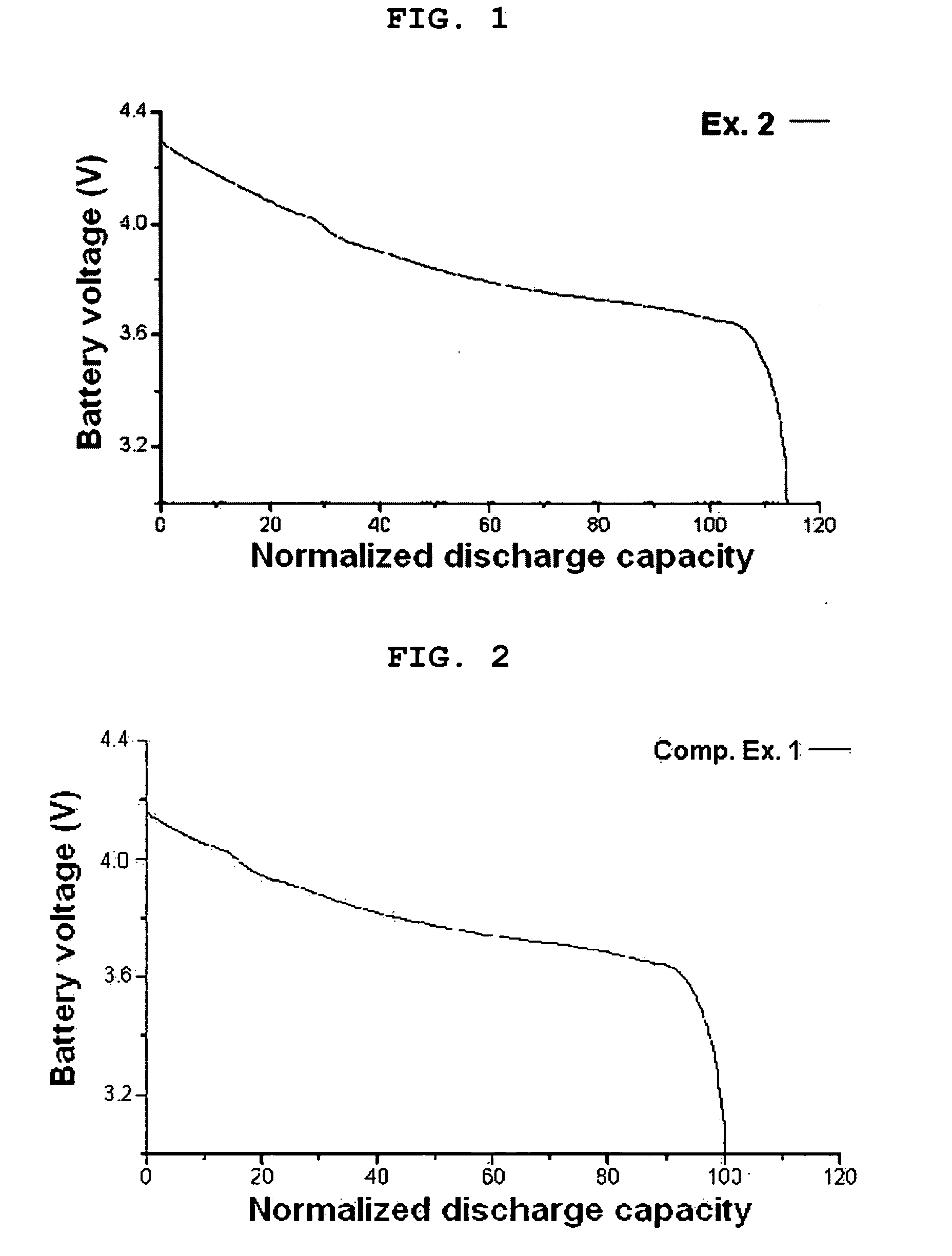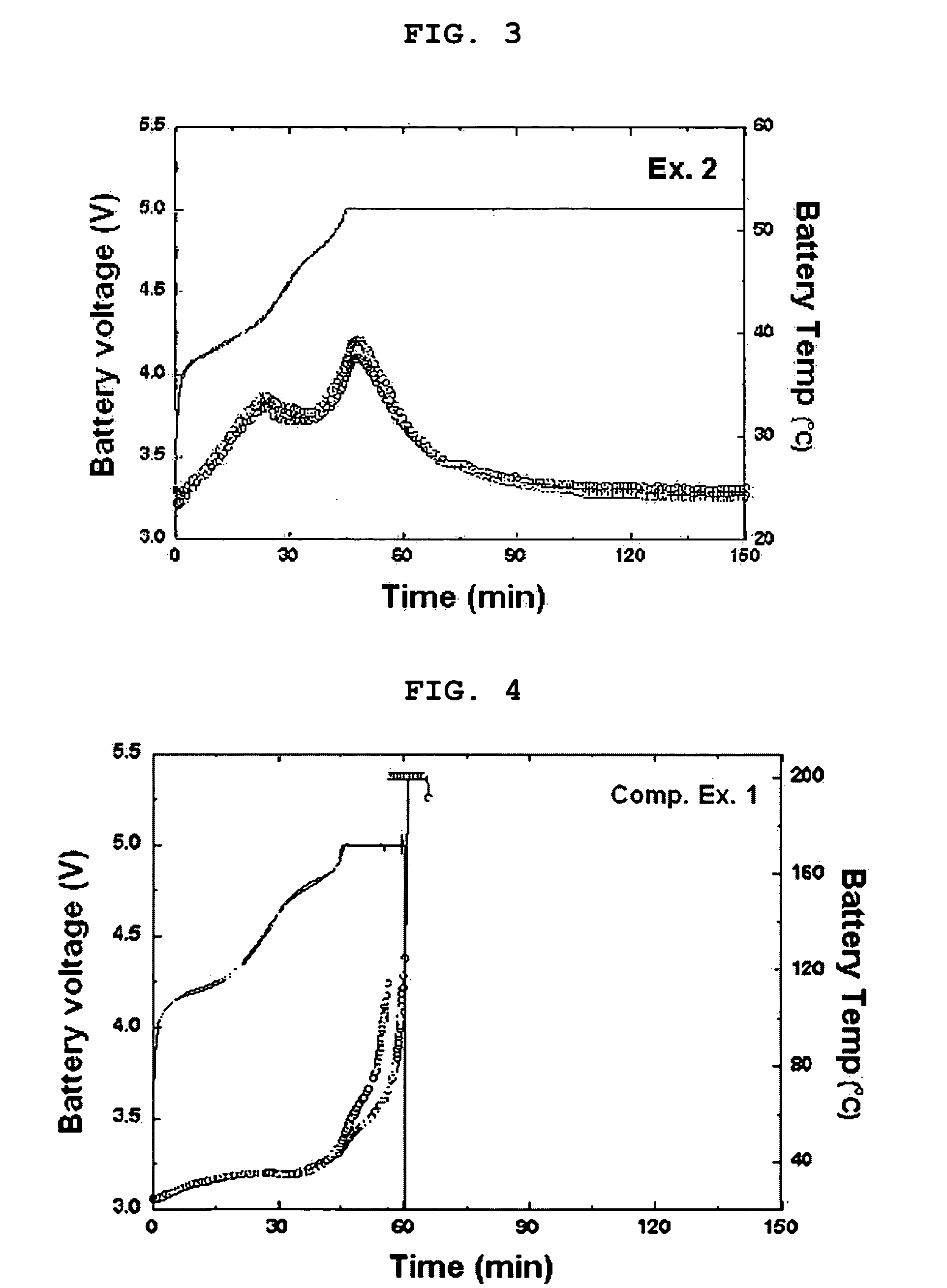Lithium secondary batteries with charge-cutoff voltages over 4.35
a secondary battery and charge-cutoff voltage technology, applied in secondary cell servicing/maintenance, non-aqueous electrolyte cells, cell components, etc., can solve the problems of rapid exothermic reaction, limited selection of anode active materials in such batteries, and inability to ensure the stability of batteries by itself. , to achieve the effect of improving the safety of high-voltage batteries and reducing side reactions
- Summary
- Abstract
- Description
- Claims
- Application Information
AI Technical Summary
Benefits of technology
Problems solved by technology
Method used
Image
Examples
examples 1-5
Manufacture of Batteries Having Charge-Cutoff Voltage Over 4.35V
example 1
Lithium Secondary Battery Having Charge-Cutoff Voltage of 4.35V (1)
[0065] (Manufacture of Cathode)
[0066] 95 wt % of LiCoO2 having a particle diameter of 10 μm, 2.5 wt % of a conductive agent and 2.5 wt % of a binder were mixed to form slurry. The slurry was applied uniformly on both surfaces of aluminum foil having a thickness of 15 μm, followed by rolling, to provide a cathode having an active material weight of 19.44 mg / cm2. The finished cathode had a thickness of 128 μm.
[0067] (Manufacture of Anode)
[0068] To 95.3 wt % of graphite, 4.0 wt % of a binder and 0.7 wt % of a conductive agent were added and mixed to form slurry. The slurry was applied uniformly on both surfaces of copper foil having a thickness of 10 μm, followed by rolling, to provide an anode having an active material weight of 9.56 mg / cm2. The weight ratio (A / C) of the anode active material to cathode active material per unit area of each electrode was 0.49, and the finished anode had a thickness of 130 am.
(Pre...
example 2
Lithium Secondary Battery Having Charge-Cutoff Voltage of 4.35V (2)
[0072] Example 1 was repeated to provide a lithium secondary battery, except that a cathode (C) having an active material weight of 22 mg / cm2 and an anode having an active material weight of 11 mg / cm2 were used to adjust the weight ratio (A / C) of the anode active material to cathode active material per unit area of each electrode to 0.50.
PUM
| Property | Measurement | Unit |
|---|---|---|
| charge cut-off voltage | aaaaa | aaaaa |
| charge cut-off voltage | aaaaa | aaaaa |
| particle diameter | aaaaa | aaaaa |
Abstract
Description
Claims
Application Information
 Login to View More
Login to View More - R&D
- Intellectual Property
- Life Sciences
- Materials
- Tech Scout
- Unparalleled Data Quality
- Higher Quality Content
- 60% Fewer Hallucinations
Browse by: Latest US Patents, China's latest patents, Technical Efficacy Thesaurus, Application Domain, Technology Topic, Popular Technical Reports.
© 2025 PatSnap. All rights reserved.Legal|Privacy policy|Modern Slavery Act Transparency Statement|Sitemap|About US| Contact US: help@patsnap.com



